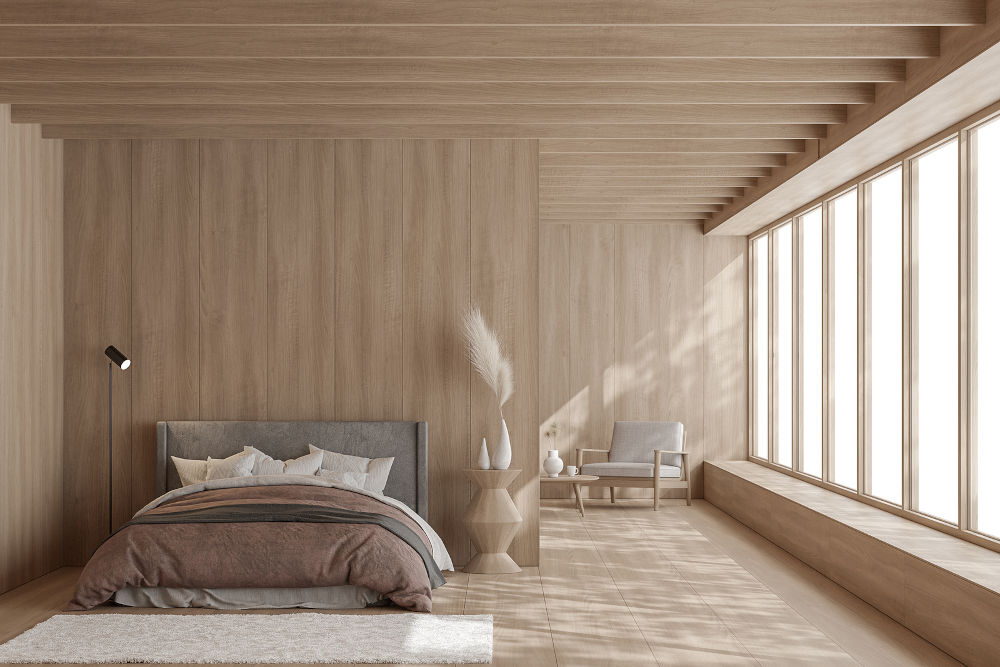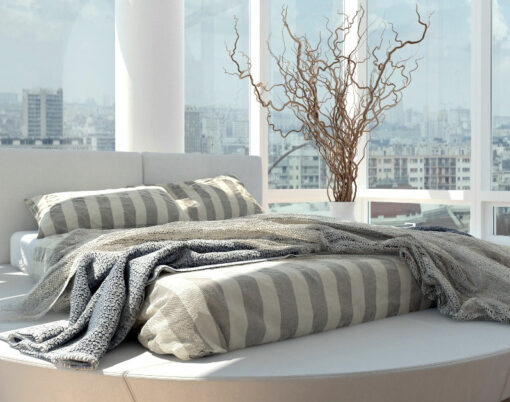In today’s world, luxury living is not just about opulent aesthetics, it also encompasses the principles of sustainability and eco-friendliness, and as environmental awareness increases, homeowners seek ways to blend luxurious designs with practices that are kind to the planet.
From finding sustainable furnishings and building materials to careful landscaping, we delve into the various aspects of creating and maintaining a home that epitomises both style and sustainability, offering practical advice for those looking to enhance their living space responsibly.
Choosing the right décor
The selection of home décor plays a crucial role in defining the interior environment, making it essential to choose options that align with both style and sustainability goals. Wallpapers are a fantastic example. By choosing wallpapers made from recycled materials or produced by environmentally responsible manufacturers, homeowners can significantly reduce their ecological footprint. Companies committed to eco-friendly practices often use non-toxic inks and sustainable paper sources, ensuring that their products are both beautiful and benign to the environment.
Sustainable furnishing and homeware
Furniture and homeware are the cornerstones of any home’s décor. Opting for items made from sustainably sourced materials, such as wood from responsibly managed forests not only supports environmental sustainability, but also adds a story of ethical sourcing to your home’s narrative. Companies like YesterHome showcase how classic styles can be achieved by focusing on craftsmanship and traditional techniques, thus reducing the carbon footprint associated with mass-produced items. Choosing such furnishings ensures durability and timeless style, reducing the need for frequent replacements and thus lessening waste.

Stylish and functional windows and doors
Windows and doors are fundamental elements that define the aesthetic appeal and functional efficiency of a home. Selecting the right models involves choosing energy-efficient options with double or triple-pane glass, which helps maintain indoor temperature consistency and reduce energy costs.
Materials like fiberglass, wood, or composites not only offer long-lasting durability, but also add a touch of sophistication to the home’s design. Many manufacturers provide these with advanced seals and special coatings that block harmful UV rays, ensuring both comfort and protection. By focusing on these aspects, homeowners can enhance their living space with windows and doors that are visually appealing and also contribute to overall building performance and comfort.
Eco-friendly fabrics and textiles
The textiles in your home, including curtains, rugs, and upholstery, also offer opportunities for sustainable choices. Organic cotton, bamboo, and recycled fibres are excellent choices for eco-conscious homeowners. These materials are produced using methods that require less water and pesticides than conventional fabrics, promoting a healthier home environment and reducing harmful impacts on the ecosystem.

Maintenance and upkeep
Maintaining the beauty and functionality of an eco-friendly home goes beyond simple aesthetics. Utilising professional cleaning services that use green cleaning products can help to preserve interior finishes while ensuring that indoor air quality remains high and toxin-free. Regular maintenance checks and repairs also prevent minor issues from becoming major problems, thereby extending the life of the home’s components and minimising the need for resource-intensive repairs or replacements.
Sustainable building materials
When constructing or renovating a home, the choice of building materials has a profound impact on both the environment and the indoor living space. Sustainable timber products, for instance, are crucial for eco-friendly building. Wood is a renewable resource, and when sourced responsibly, it acts as a carbon sink, storing carbon dioxide throughout the lifespan of the building. Companies like EcoChoice offer insights and products that not only ensure the sustainability of the forests they harvest from, but also provide high-quality, durable materials.
Essential home maintenance
Proper maintenance of a home’s critical systems, such as heating, plumbing, and roofing, is essential for sustainability. Efficient heating systems reduce energy consumption and lower carbon emissions, while well-maintained plumbing can prevent water wastage. Roofing should be regularly inspected and cleaned to prevent damage and ensure optimal performance. Companies like Rightio provide expert advice and services that help homeowners keep these systems in top condition, contributing to the overall efficiency and sustainability of the home.

Landscaping and outdoor spaces
The design of outdoor spaces often reflects a home’s style, but it also has the potential to improve environmental sustainability. Xeriscaping, the practice of designing landscapes to reduce or eliminate the need for irrigation, is an excellent strategy for conserving water. Additionally, planting native plants can attract local wildlife and support regional biodiversity, creating a garden that is both beautiful and beneficial to the local ecosystem.
Final thoughts
Creating a luxurious, eco-friendly home involves thoughtful consideration of every element, from the construction materials to the daily maintenance routines. By choosing sustainable wallpapers and furnishings, employing green cleaning methods, and using durable materials for construction and renovation, homeowners can create spaces that are both visually stunning and environmentally responsible.
Sustainable living does not require sacrificing style or comfort; rather, it integrates these with a consciousness towards environmental health and durability. The true luxury in today’s homes lies in their ability to harmonise sophisticated design with practices that protect and preserve our planet for future generations.






















